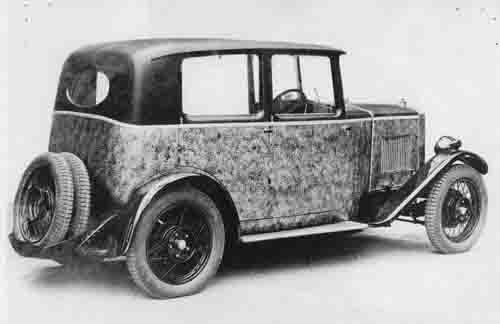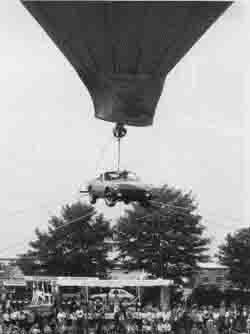MG Abingdon – An Uncertain Future
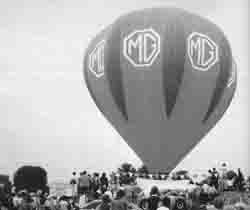
 A significant MG milestone was reached on October 10, 1975 when the company produced their one-millionth sports car. This event passed almost unnoticed as any form of celebration was ruled out by senior British Leyland management. One wonders whether the reaction would have been the same had the vehicle in question had a different badge on it.
A significant MG milestone was reached on October 10, 1975 when the company produced their one-millionth sports car. This event passed almost unnoticed as any form of celebration was ruled out by senior British Leyland management. One wonders whether the reaction would have been the same had the vehicle in question had a different badge on it.
Back at the beginning of 1975 the MGB GT had been withdrawn from the United States. This was not in fact done to remove possible competition to the TR7 as is generally thought, but was more to do with emissions. The greater weight of the GT over the Tourer put it into a higher weight category for emissions purposes, which would in turn have led to difficulties in getting the car into North America without yet more stringent and power sapping emission equipment added to an already stretched engine. The answer was a new power unit for the ‘B’ something that Longbridge had in fact been working on for some time in the shape of the ‘O’ series engine, more of which later.
During the 1970s MG Abingdon was like the proverbial swan serene on the surface and paddling like mad beneath the water! The mountain of legislation issuing forth from the National Highway and Traffic Administration (NHTSA) in the United States threatened to swamp the Abingdon concern. As if this wasn’t enough, Abingdon had had to endure the three-day working week imposed by the British government to counter the miners’ strike, causing problems not only of building sufficient cars, but of getting enough quantities of material from overstretched suppliers to build them with.
The NHTSA requirements of installing a passive restraint system aimed at keeping the occupants of the car from being thrown about in the event of an accident was one thing, but another of their proposals was giving Abingdon nightmares. In fact at one point it looked like putting them out of business. This required the car to endure a roll over test that would literally flip the car over at speed from a trolley, launching it into the air before crashing onto its side, whereupon its momentum would cause it to roll over onto its roof until its energy was expended. It didn’t take much to work out that a convertible with no rigid roof structure would not give much protection to the vehicle’s occupants in such a situation.
It quickly became apparent that all convertibles would in future be ruled out by this piece of legislation. Fortunately the US domestic manufacturers decided to challenge this ruling in the courts and were quickly joined by the importers in this action, at the forefront of which was the team from British Leyland led by Roy Brocklehurst. Happily the judgment went against the NHTSA, and MG sports cars would live to fight another day. This proposed legislation, by the way, was the reason that the TR7 was initially designed as a fixed head coupe.
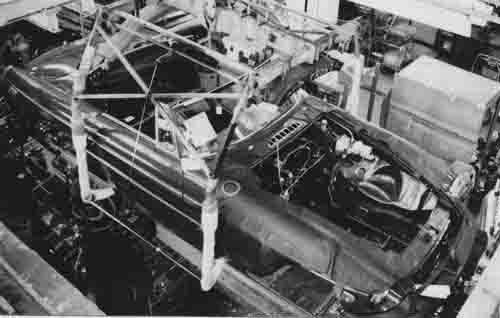
Although the NHTSA didn’t specify a particular passive restraint system, it was becoming increasingly evident that the favoured solution was the installation of airbags. It may be difficult for us to appreciate today, but at that time there was a great deal of mistrust of airbags, with scare stories emanating from the States of the bags inflating by mistake on American cars already fitted with them and actually causing terrifying accidents. Abingdon, therefore, in spite of (or perhaps because of) the groundbreaking work that the MG development team led by Mike Hearn had done on airbags, opted for a ‘sequential seatbelt’ system instead. Another reason to go with seatbelts was to avoid what would be a fairly major tear up to fit the bag(s) and gas cylinder behind the fascia.
This alternative system, then, was an arrangement whereby the car could not be started unless the driver (or passenger) sat on the seat first and fastened their belt(s) in the correct sequence. This was an electronically controlled arrangement, which contained a number of fail safe systems that would always enable the driver to start the car in an emergency situation. Abingdon were not alone in fitting this system as, although developed specifically for MG, it was also picked up by other parts of the British Leyland group, namely Triumph and Jaguar. Many American buyers, however, disliked being made to wear seatbelts and had the system de-activated within a few weeks of purchasing the car. Strangely, this was not illegal as the vehicle only needed to comply with the various regulatory requirements at the point of sale!
In order to ensure compliance with the various regulations effective at this time, Abingdon were required to carry out a whole raft of ‘whole vehicle’ crash testing. The only suitable location that had the necessary equipment to undertake this work was the Motor lndustry Research Association’s test facility near Nuneaton in Leicestershire. Whilst this venue may well have suited the Midlands brigade, it was a somewhat inconvenient spot for the MG contingent to access, involving a great deal of time-consuming travelling. After some discussion, it was concluded that it would be cost effective and far more convenient for MG to build their own crash facility actually on-site at Abingdon. Roy Brocklehurst was able to secure the necessary funding for the project and work began, as soon as a suitable site had been identified within the factory compound. Designed jointly between the development technicians and the project office, the building work was supervised by the on-site factory planning department. The Cowley Photographic department was also involved and was able to purchase a super high speed film camera, an essential piece of equipment for recording the test results, out of the allotted budget. It was hoped that once up and running, the facility would be used by other parts of the Corporation, thus offering the group the possibility of a considerable cost saving.
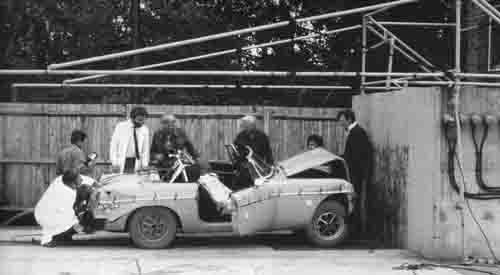

There was some welcome news for Abingdon in April 1977 when the ‘O’ Series engine programme was signed off for the MGB. This would mean that for the first time since 1936, MG would have a single overhead cam engine at their disposal. This was a brand new engine featuring a belt driven camshaft, which to save cost had been designed to be manufactured on the ‘B’ Series transfer machinery. Initially designed to have a carburetter utilising a closed loop feedback system, it was soon decided to go ahead with-a Lucas/Bosch fuel injection system for the USA spec car. This would feature an electronic control system similar to that being developed for Jaguar, which would carefully monitor the amount of fuel being fed into the engine, thus eliminating the need for the rather cumbersome air pump that had been sapping so much power from the current ‘B’ series power unit. With this new engine, designed specifically for the MGB, production of the ‘B’ was planned to continue well into the 1980s, buying valuable time for the MG plant and enabling them to perhaps salvage something from the ashes of the TR7 project. There was always the hope that MG might share in the new ‘Lynx’ project, currently underway at Canley, at some point in the future.
With the efforts of the MG design/development team now fully focused on the ‘O’ series project, the Abingdon factory suddenly found itself with a new general manager. In February 1977, Bob Ward had been transferred back to Longbridge and many of those who had eyed his arrival with suspicion were now genuinely sorry to see him go. Bob’s replacement, also from Longbridge, was Peter Frearson, a local man who had begun his career at Morris Motors and who knew the MG plant well. One of his first tasks after settling in was to preside over a factory ‘Open Day’ to be held in the September. This was a Leyland Cars initiative to try to improve industrial relations by involving employees’ families in the company’s activities. Whilst MG didn’t actually have any lR problems to write home about, they thought it would be a good idea to let their employees ‘families see what went on anyway. An extremely packed programme included displays such as a couple of live crash tests, skid control and driving tests by the resident BL Advanced Driving School, and dynamic demonstrations of the Dunlop ‘Denovo’ puncture proof tyre. Leyland ST (Special Tuning) threw open their workshops for the day, in which cars were being prepared for the Manx lnternational Rally, whilst drivers such as Brian Culcheth and Tony Pond were available to sign autographs. In fact no part of the factory was off limits; visitors could watch the production line in action, wander through the development shop or visit some 50 suppliers’ stands that had been set up in ‘B’ building. If none of this appealed then people could simply enjoy a variety of refreshments whilst listening to the Oxford Concert Band.
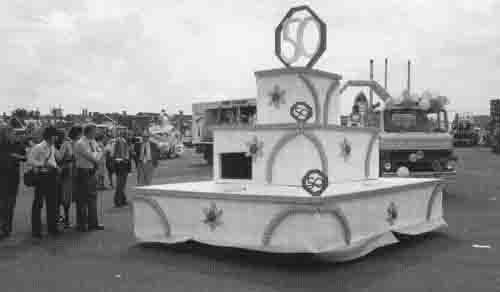
In September 1978 the MG Assembly Plant, as it was then called, was transferred to the Jaguar Rover Triumph Division of British Leyland. The MG workforce questioned the reasoning behind this move, but were assured by all concerned that there was no ulterior motive and that it would be in their best interest, and that Peter Frearson would continue to head up the MG factory on a day to day basis.
As the year came to a close it soon became apparent that the factory open day the previous year had been but a warm-up act for the Jubilee celebrations that were being proposed to mark 50 years of the MG factory in Abingdon. Planned as a joint celebration with the town, there would be a whole week of events culminating on the Saturday in a carnival procession through the streets, starting at the factory and ending up at the MG sports ground in Caldicott Road.
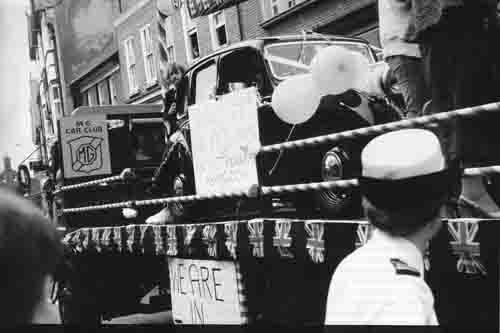
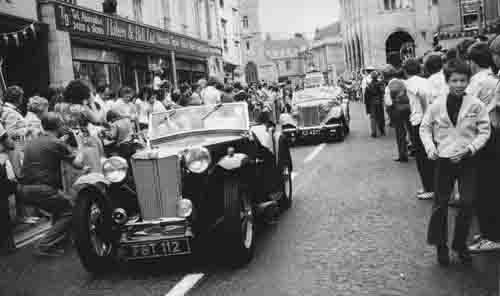
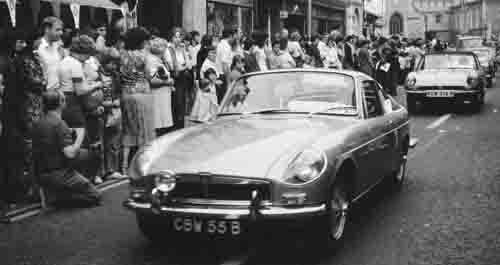
One of the more interesting collaborations with a local business for the event proved to be the offer by the Abingdon brewery of Morland & Co to prepare a special brew to mark the occasion. Morlands suggested that this new beer could perhaps be named after one of the special cars from the MG stable. The name ‘Magic Midget’ had already been used for a new public house that the Abingdon brewery had recently opened in the town (officially opened, incidentally, by Lord Stokes in December 1974), so an alternative had to be found.
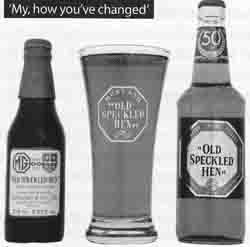 Tony Day, secretary of the Jubilee committee did a bit of brain storming and came up with ‘Old Speckled Hen’ the nickname given to an early 14/40 saloon (which was probably a corruption of old speckled ‘un’ due to its unusual flecked paint finish), that was used as a works demonstrator. The fact that this car was built at the Edmund Road factory in Oxford, and was sold prior to the move to Abingdon, didn’t seem to cause any problems. It was a good name for a beer and that was all that mattered! Its success can be measured by the fact that ‘Old Speckled Hen’ is now a firm favourite with beer drinkers the world over, who probably know little or nothing of its humble origins.
Tony Day, secretary of the Jubilee committee did a bit of brain storming and came up with ‘Old Speckled Hen’ the nickname given to an early 14/40 saloon (which was probably a corruption of old speckled ‘un’ due to its unusual flecked paint finish), that was used as a works demonstrator. The fact that this car was built at the Edmund Road factory in Oxford, and was sold prior to the move to Abingdon, didn’t seem to cause any problems. It was a good name for a beer and that was all that mattered! Its success can be measured by the fact that ‘Old Speckled Hen’ is now a firm favourite with beer drinkers the world over, who probably know little or nothing of its humble origins.
